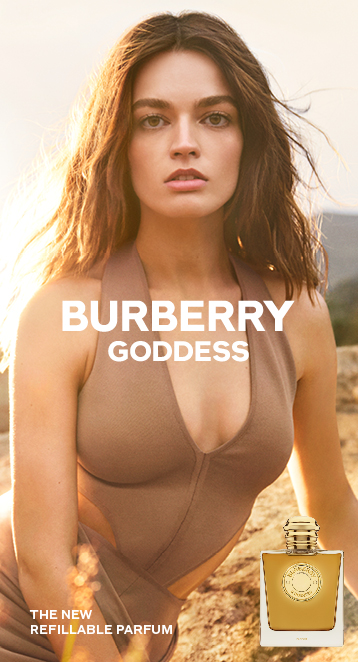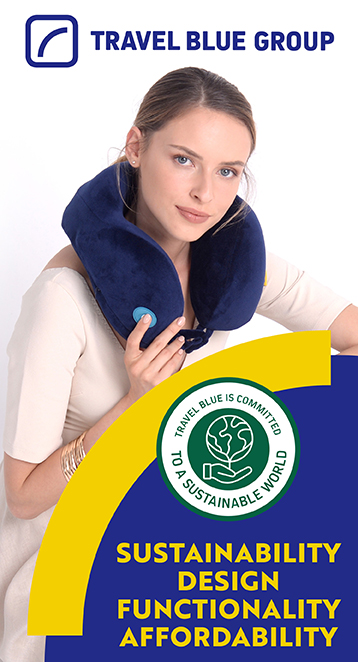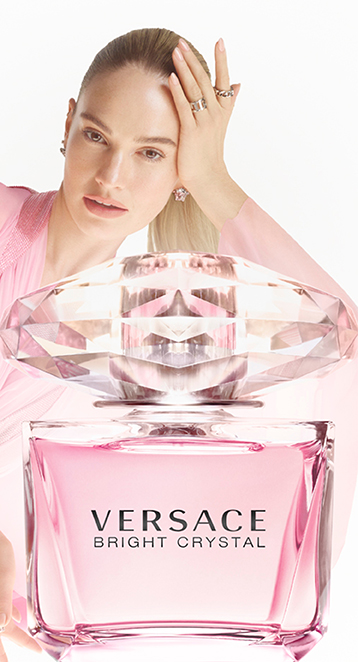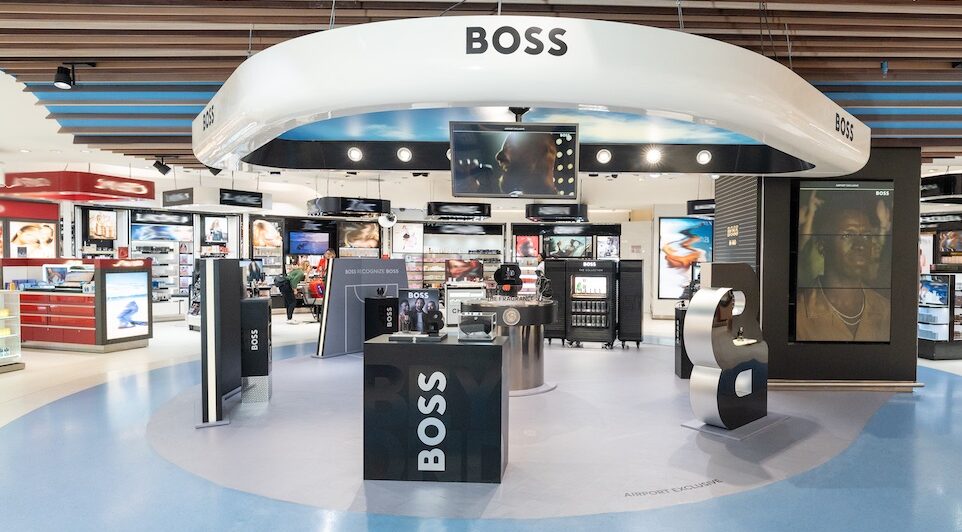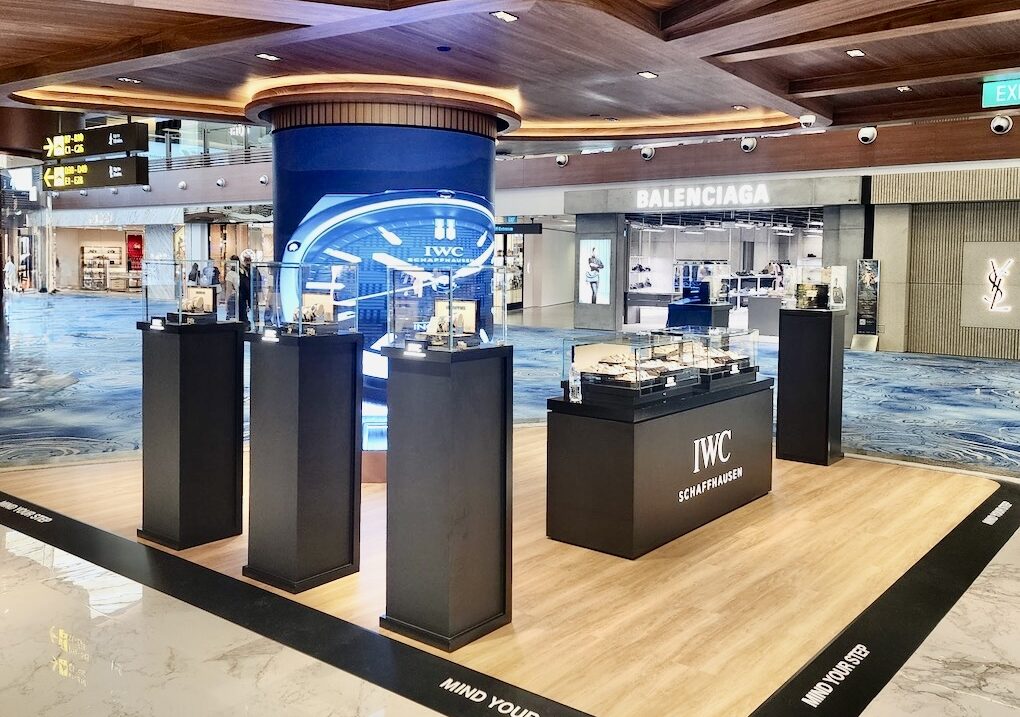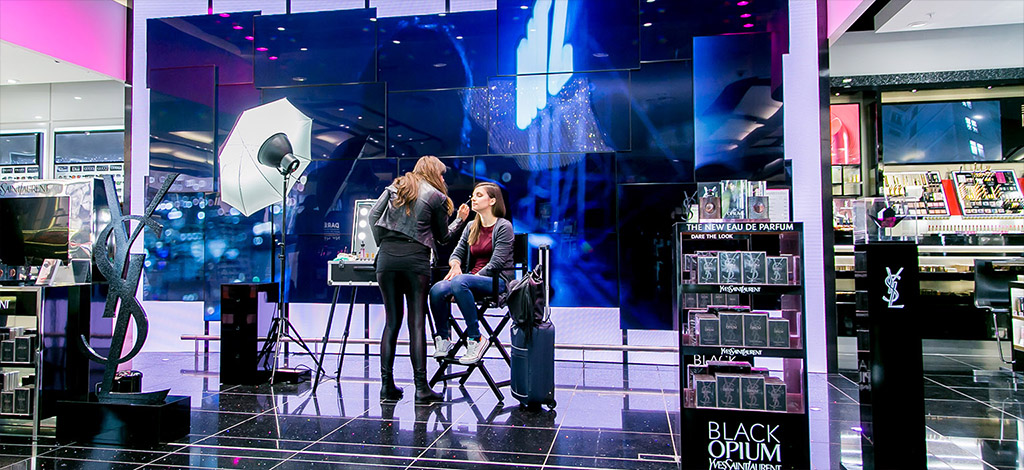
A daigou-related slowdown in the key markets of South Korea and Hainan weighed on L’Oréal Groupe’s first-half travel retail performance, the French beauty powerhouse revealed today.
During a post-results earnings call, L’Oréal Chief Financial Officer Christophe Babule said travel retail momentum slowed in the period, partly due to the impact of a high comparison basis in Q2 2022 and this year because of reduced sales in the key South Korea and Hainan markets.
“In Hainan, however, there’s been a clear deterioration between the first and the second quarter. As you know, in mid-May the authorities started to exercise much tighter control over the daigou trade to preserve what they call Hainan’s golden brands and travel retail operators have consequently refocused on the individual traveller. This has had a severe impact on industry-wide sell-out. We’re obviously not immune to this.”
Despite the travel retail softening (see further detail below), groupwide revenue rose +12% on a reported basis (+13.3% like-for-like) to €20.57 billion in the six months ended 30 June.
Operating profit jumped by +13.7% to €4,258.8 million and amounted to 20.7% of sales, a year-on-year increase of 30 basis points.
The company posted a net profit of €3,616.6 million excluding non-recurring items and after non-controlling interests, up +11.1% year-on-year.

Commenting on the group figures, CEO Nicolas Hieronimus said: “In a beauty market that is more dynamic than ever, L’Oréal delivered a remarkable performance and further strengthened its global leadership in the first half.
“Growth was broad-based across all divisions, regions, categories, and channels, once again vindicating our balanced, multi-polar model. Growth continued to be driven by the dual cylinders of volume and value – testament to the success of our innovations and the desirability of our brands.
“In keeping with our virtuous circle, we improved our profitability, all while significantly increasing investment in our brands. At the same time, in line with our dual ambition of economic and corporate performance, we continued to invest in the transition towards a more sustainable operating model that will ensure long-term value creation.”
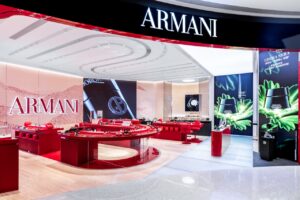
Babule said that if the current policy remains the same [as is likely -Ed], L’Oréal believes it could lead to “a couple of months of inventory reduction”. However, he emphasised that the group’s “absolute priority” is the protection of its brands equity within the Chinese ecosystem [i.e. all retail channels =Ed].
“To put our exposure into context, Hainan represents less than 3% of our business, the total Chinese ecosystem around 23%,” Babule added.
“So Mainland China has always been our focus, and we believe that the new paradigm in Hainan should have a positive impact on sell-out in the domestic market. This plays in our favour given how strong our market share is in Mainland China.
“As we have seen recently, there has already been a partial transfer of purchases to the domestic market. All in all, our first half sell-through in the Chinese ecosystem amounted to +10% and was indeed well ahead of the market at +2.6%.”

Moving parts in North Asia travel retail
Asked whether South Korea and Hainan travel retail would see both negative sell-out and sell-in during the second half, Hieronimus concurred there were “lots of moving parts” in North Asia.
“On the one hand, you’ve got a change of paradigm in travel retail… in the first quarter, the Korean operators reduced their buying and particularly their trade with daigou. And in May the authorities in China decided to put a strong control over daigou.
“And of course, that has a strong impact on sell-out, particularly because during the years of lockdown where there was barely any real traveller that was going to travel retail [outside Hainan -Ed], that [daigou trading] was probably the way to keep the retailers in shape. So there is a change of paradigm.
“Short term, it will be negative. But mid-term and long term, it’s very positive because in the end this is a market that’s going back to Mainland China and will contribute to the acceleration, I believe, of Mainland China, where we have both better share and lots of fuel.”
Identifying the right balance between China travel retail and domestic markets
Hieronimus reiterated the rebalancing of offshore duty free and local market sales in China. He said this is particularly important for L’Oréal Luxe, which enjoys a close to 33% domestic market share. “So, yes, it’s going to be a different profile for the months to come. So a slowdown in travel retail, probably a couple of months of destocking. But I guess there will be continued acceleration on the Mainland Chinese market.”
Pressed by Berenberg’s Fulvio Cazzol on the possibility of a permanent rebasing of China-related travel retail, Hieronimus replied, “Travel retail remains a fantastic channel, both for business and to showcase our brands and we’ll continue to use travel retail as such.
“Right now, the worldwide traffic is at plus +56% versus 2022, very dynamic in Western Europe, and it’s beginning to pick up in North Asia with Chinese travelling to Thailand and to other parts.
The ‘normalisation’ of travel retail
“So it is definitely a showcase for our brands. The only thing is that, as we said, COVID and the lockdowns have kind of fostered an unusual development of this daigou business, which is now being brought to normal levels.
“We do not know exactly what the Chinese authorities will want to do in the future because the rules can change from one day to another. So we’ll adapt as we always do. But very clearly, we will continue to invest in travel retail.”
Later he added: “Travel retail will continue to play its role, but now it’s being, I would say, normalised. And I think it’s a good thing for us.”
Declining to put a percentage on what the daigou business out of Korea and Hainan represented, Hieronimus steered his answer to the group’s determination to protect the Chinese domestic market.
“We have a specific working group… which includes our travel retail teams and our Chinese [local market] teams, managing to make sure that the level of prices and the type of promotions in travel retail are never detrimental to the Chinese business, and that’s why we’ve valorised so much our travel retail business.”

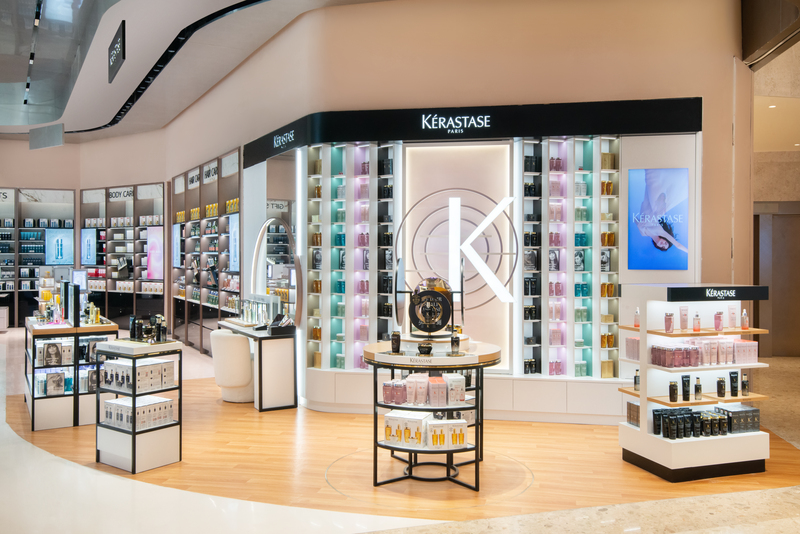

Across all channels, the group saw broad-based momentum in all product categories. Its Dermatological Beauty arm posted the fastest growth at +29% (like-for-like) and +29.5% (reported), followed by Consumer Products at +15% (like-for-like) and +13.1% (reported) and Professional Products division with +7.6% (like-for-like) and +6.9% (reported).

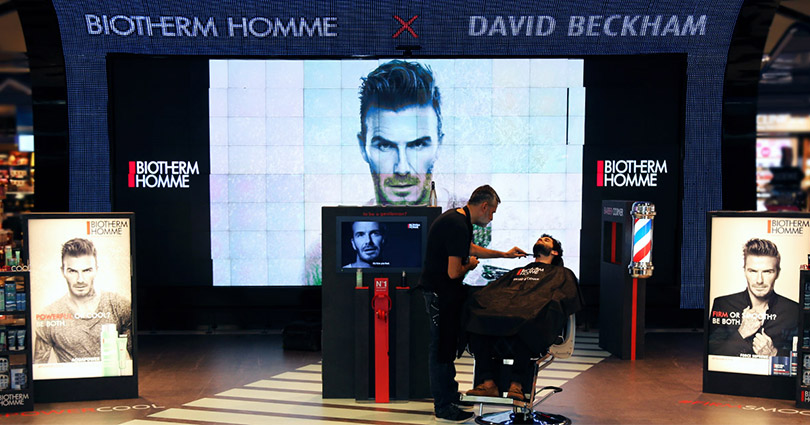
Geographically, the beauty giant saw growth in all regions, marking a “particularly impressive momentum in Europe, strong performance in the United States and sharp recovery in Mainland China in the second quarter.”
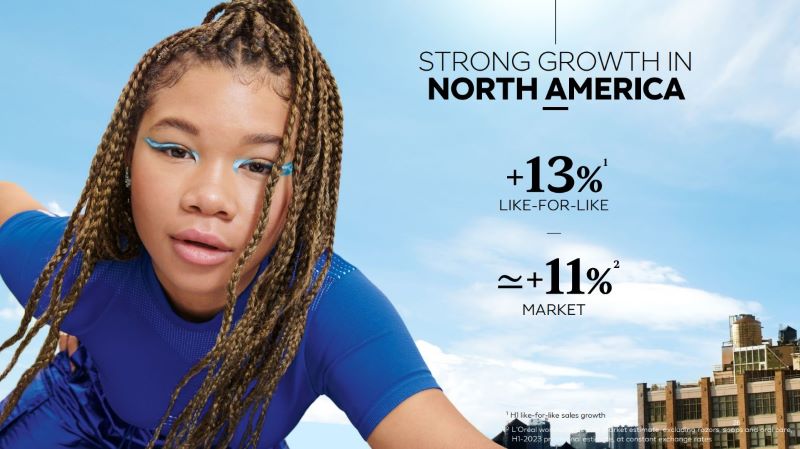
Europe was the best-performing region where sales grew +16.6% as reported and +18.2% like-for-like, driven by notable performances in key countries such as the Germany-Austria-Switzerland cluster, France and the UK. It also posted strong growth in countries like Poland, Turkey and the Nordics.
The group noted a particular increase in ecommerce sales in the region during the second quarter, fuelled by a sound contribution from value and an increase in volume.

In North America, sales rose by +14.7% as reported and +13.0% like-for-like in the first six months. Growth was broad-based across all the divisions and was driven by a strong contribution from both price and mix.
China’s stable recovery in the second quarter has boosted sales in North Asia, which went up +3.9% like-for-like and +0.6% as reported. Both offline and online channels contributed to the growth.
L’Oréal outperformed the market and made strong progress across all channels and divisions during this period. It attributed the positive results to the introduction of new brands such as Valentino, Prada and Takami, a well-filled innovation pipeline and the gradual expansion into new cities.

It also highlighted the company’s success during the 6.18 shopping festival, with eight of the group’s brands across all four divisions making it in the Top 20. L’Oréal and Lancôme ranked first and second, respectively.
Sales in Hong Kong SAR continued to strongly increase mainly due to the return of travellers from Mainland China.
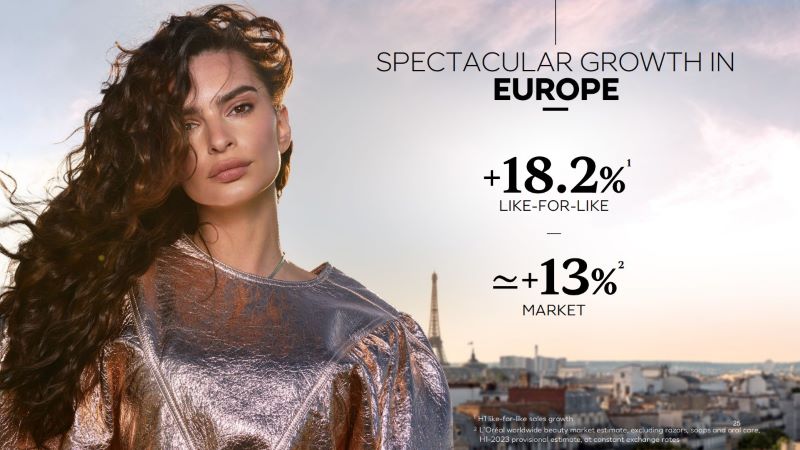
In Japan, the company outperformed the market, thanks to significant momentum in consumer products, notably with Maybelline New York, and L’Oréal Luxe, with standout performances for Takami and Shu Uemura.
Sales in the SAPMENA-SSA region rose sharply by +23.6% like-for-like and +17.4% reported. The company saw “well-balanced” growth between Pacific, Southeast Asia, South Asia and Middle East & North Africa.

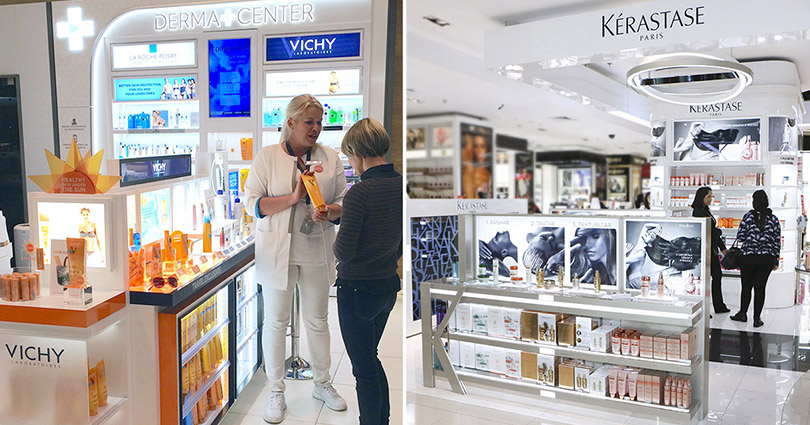
Latin America also noted a steep increase, +23.6% like-for-like and +28.9% reported. The beauty market remained dynamic across all key countries in the region, driven by Mexico and Brazil.
Looking ahead, Hieronimus said: “In an economic context that is still uncertain, we remain ambitious for the future, optimistic about the outlook for the beauty market, and confident in our ability to keep outperforming the market and achieve in 2023 another year of growth in sales and profits.” ✈





